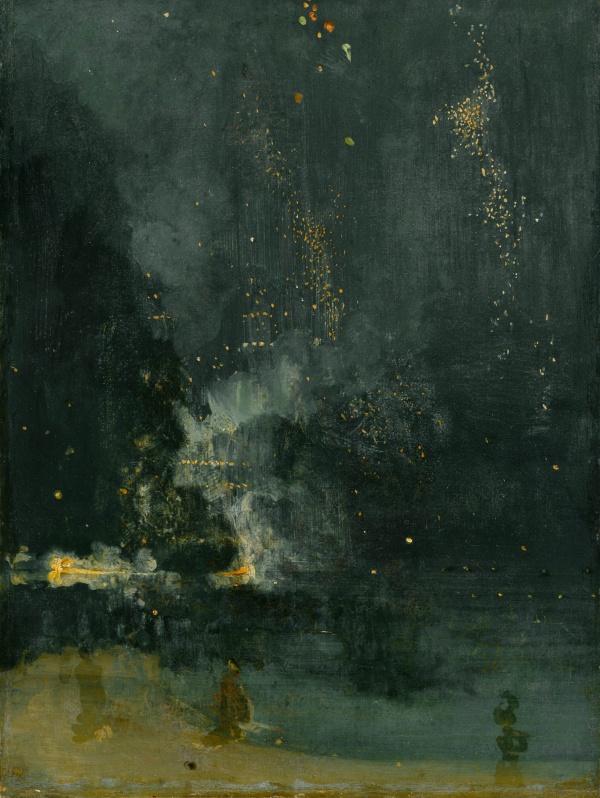Facts About Nocturne in Black and Gold – The Falling Rocket
"Nocturne in Black and Gold – The Falling Rocket" painted by James Abbott McNeill Whistler around 1875, is a mesmerizing work now housed in the Detroit Institute of Arts. This piece epitomizes the "Art for Art's Sake" movement, a philosophy endorsed by figures like Pierre Jules Théophile Gautier and Charles Baudelaire. First exhibited at the Grosvenor Gallery in London in 1877, it is one of two paintings influenced by London's Cremorne Gardens, the other being "Nocturne in Black and Gold – The Firewheel." Widely regarded as a seminal work from Whistler's middle period, the painting captures the essence of an industrial city park illuminated by a fireworks display on a foggy night.
The composition features a subdued but impactful color palette of blue, green, and yellow, generating a serene yet vibrant atmosphere. Whistler skillfully depicts a fireworks scene within the misty air, with flashes of yellow adding energy and motion. His unique style, inspired by Japanese prints, is evident in the brushwork and the minimalist representation of figures. This painting is part of Whistler's Nocturne series, which sought to convey the mood of nighttime scenes through color and tone rather than intricate detail.
The artwork provoked a significant controversy when renowned art critic John Ruskin harshly criticized it, prompting Whistler to sue him for libel. The subsequent trial, known as the Ruskin vs. Whistler Trial, ended in a partial victory for Whistler, who was awarded a mere farthing and later struggled with financial difficulties due to legal fees. This episode underscored the conflict between artistic freedom and public opinion, with Ruskin's critique severely affecting Whistler's standing in the art world.

 Mexico
Mexico